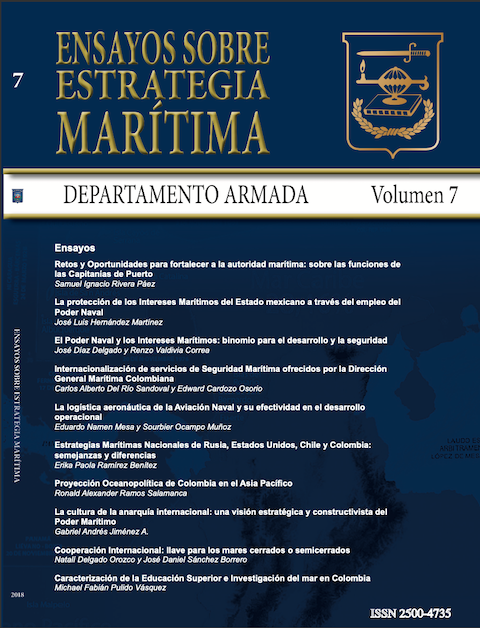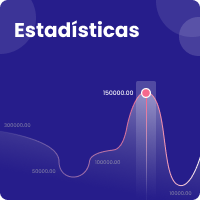Proyección Oceanopolítica de Colombia en el Asia Pacífico
DOI:
https://doi.org/10.25062/2500-4735.474Keywords:
Pacific Alliance, bioceanic, oceanopolitics, foreland, hinterlandAbstract
Colombia occupies a privileged position in the context of Oceanopolitics, determined by its maritime spaces that project it towards the two great oceans in a central or equatorial position in the Pacific and the Atlantic, in which the most important economic powers compete. in the world, around the trade that feeds the development of the industrialized countries, such as China, Japan, South Korea and its Southeast Asian neighbors, being jointly in the last decade the largest exporters in the world that energize the world economy with main axis in the Pacific Ocean.Author Biography
Ronald Alexander Ramos Salamanca, Fuerza Aérea Colombiana, Colombia
References
Rodríguez, M. L (2004). Globalización y Geopolítica del océano Pacífico: La redistribución de las hegemonías en los inicios del siglo XX1. Articulo Recuperado de: https://geopoliticaxxi.files.wordpress.com/2011/05/globalizacion-y-geopolitica-del-oceano-pacifico-en-el-siglo-xxi.pdf
Stratfor, Monographs (2016). The Geopolitics of the United States, Part 1: The Inevitable Empire. Article From: https://worldview.stratfor.com/article/geopolitics-united-states-part-1-inevitable-empire
Tricks, H (2014). The Pacific Age. Under American leadership the Pacific has become the engine room of world trade. But the balance of power is shifting, writes Henry Tricks. The Economist, Special Report. Article From: https://www.economist.com/special-report/2014/11/13/the-pacific-age
Prosertek, Blog (2016). Los puertos y su clasificación. Recuperado de: https://prosertek.com/es/blog/clasificacion-puertos
Rua costa, C (2006). Los puertos en el transporte marítimo. Universitat Politécnica de Catalalunya. Institut d’Organització i Control de Sistemes Industrials. Recuperado de: https://upcommons.upc.edu/bitstream/handle/2117/289/8.%20Rua.pdf
CEPAL (2018). Ranking de puertos, los Top 20 en América Latina y el Caribe en 2017. Recuperado de: https://www.cepal.org/es/infografias/ranking-puertos-top-20-america-latina-caribe-2017
DLCA (2018). Logistics Capacity Assessment. 2.1 Colombia Puertos Marítimos. 2.1.1 Colombia Puerto de Buenaventura. Recuperado de: http://dlca.logcluster.org/display/public/DLCA/2.1.1+Colombia+Puerto+de+Buenaventura;jsessionid=90BD82116484B41E608A525CDE4416E3#id-2.1.1ColombiaPuertodeBuenaventura-Desempe%C3%B1odelPuerto
PEIIT (2013). Plan Estratégico Intermodal de Infraestructura de Transporte. Ministerio de Transporte, Plan Nacional de Desarrollo 2014 -2018. Recuperado de: https://www.mintransporte.gov.co/Documentos/documentos_del_ministerio/PEIIT
AP (2018). Alianza del Pacifico, el poder de la integración. https://alianzapacifico.net/que-es-la-alianza/
Perry, G (2014). The Pacific Alliance: A Way Forward for Latin American Integration? Center for Global Development. June 2014. Recuperate to: https://www.cgdev.org/sites/default/files/pacific-alliance-way-forward-latin-american-integration.pdf
How to Cite
Downloads
Downloads
Published
Issue
Section
License
Copyright (c) 2022 Ensayos sobre Estrategia Marítima

This work is licensed under a Creative Commons Attribution-NonCommercial-NoDerivatives 4.0 International License.

| Article metrics | |
|---|---|
| Abstract views | |
| Galley vies | |
| PDF Views | |
| HTML views | |
| Other views | |
















